Easy Crab Cake Recipes with Old Bay Seasoning
Crab cakes have earned a beloved spot in American seafood cuisine, particularly along the East Coast. Their appeal lies in their versatility: they can be served as an elegant appetizer, a satisfying main course, or even a savory brunch option. Among the many regional variations, one stands out for its unmistakable flavor—crab cakes seasoned with Old Bay. This iconic spice blend brings a signature tang that perfectly complements the sweetness of lump crabmeat.
For anyone looking for a quick and easy crab cake recipe, this version delivers both simplicity and bold flavor. The key lies in a combination of pantry staples and fresh ingredients, including mayonnaise, celery, lemon juice, and a dash of Old Bay seasoning. Together, these components create a balance of moisture, texture, and taste that transforms everyday crab into something memorable.
Beyond just seasoning, Old Bay’s historical significance also adds to the appeal. Originally developed in Baltimore, it has become a staple in seafood dishes across the U.S. Its blend of celery salt, paprika, and black pepper is essential in delivering the traditional Maryland-style flavor. Learn more about the history of Old Bay Seasoning and why it’s stood the test of time.
If you’re interested in exploring more classic seafood pairings or want inspiration for a full seafood dinner, check out these curated seafood recipes on Pinterest. Whether you’re a home cook preparing a weeknight meal or a host planning a special gathering, these easy and delicious crab cakes will impress every time.
What Is Old Bay Seasoning?
Old Bay seasoning is a classic American spice blend that has become synonymous with seafood dishes, particularly crab and shrimp. Originally created in Baltimore, Maryland, by Gustav Brunn in the 1940s, Old Bay was developed to enhance the natural flavors of shellfish. Its distinctive taste is what gives Maryland-style crab cakes their recognizable edge. The blend is a closely guarded recipe, but it’s widely known to include celery salt, paprika, black pepper, and a mix of other spices like mustard, bay leaf, and cardamom.
This versatile seasoning has gone beyond its regional roots to become a household staple across the United States. What makes Old Bay unique is how it balances heat, saltiness, and herbal notes without overpowering the seafood it’s paired with. Whether used in a dry rub, mixed into batters, or sprinkled on top after cooking, it delivers a complex flavor profile that enhances any seafood-based recipe. For a full overview of what goes into the blend and its culinary applications, you can visit the Old Bay Seasoning page on Wikipedia.
In addition to crab cakes, Old Bay is used in a variety of recipes such as boiled shrimp, corn on the cob, and even popcorn. If you’re looking for new ways to use this spice, these Pinterest boards on Old Bay recipes offer plenty of inspiration. You can also check out our internal recipe guide, “5 Easy Old Bay Shrimp Recipes”, for more creative ideas.
As part of a well-stocked seafood kitchen, having a container of Old Bay on hand can elevate even the most basic ingredients. Whether you’re creating a classic dish like Old Bay crab cakes or experimenting with fusion flavors, this seasoning is a go-to for professional chefs and home cooks alike.
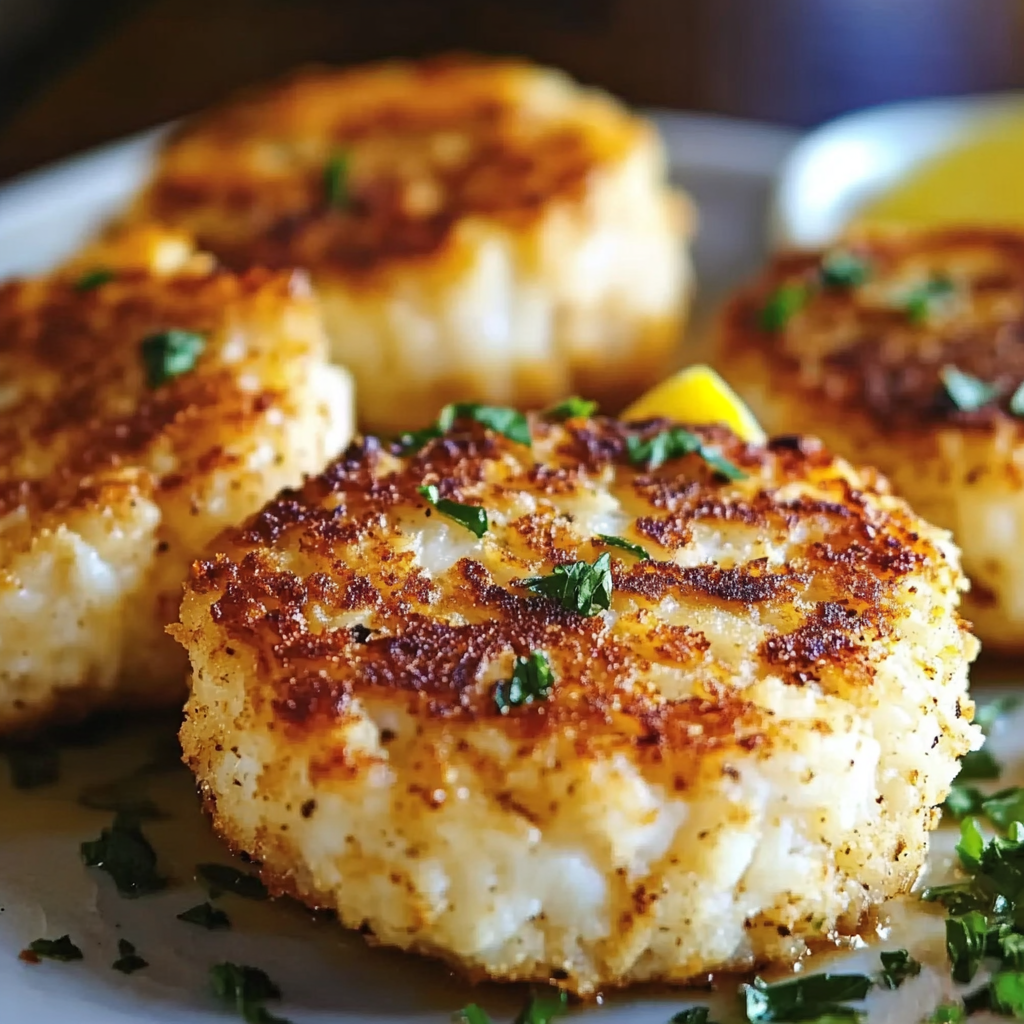
The Perfect Crab for Crab Cakes
Choosing the right type of crab meat is essential for crafting authentic and flavorful crab cakes. While there are several varieties available in the market, not all are ideal for this recipe. The best option by far is lump crab meat, which consists of large, intact pieces of white meat from the crab’s body. It offers the perfect balance between texture and flavor, helping crab cakes maintain their shape while delivering a rich, slightly sweet seafood taste.
There are four common types of crab meat used in cooking:
-
Jumbo lump – The most premium and expensive; large chunks ideal for elegant presentation but may be too delicate for mixing.
-
Lump – Slightly smaller than jumbo lump but still firm and flavorful, making it the most popular choice for crab cakes.
-
Backfin – A mix of broken lump and flake body meat; less uniform but budget-friendly.
-
Claw meat – Darker, oilier, and stronger in flavor; better suited for soups and dips than crab cakes.
While fresh lump crabmeat is preferred, pasteurized canned options are also widely used for convenience. They are typically packed in airtight containers and stored in the refrigerated section. When using any crab meat, especially the canned or packaged kind, always inspect and pick through it carefully to remove any stray shells. This step ensures your crab cakes are smooth and enjoyable to eat.
If you’re new to working with crab, you can explore a deeper overview of its types and uses on the Crab Meat page on Wikipedia. The article details differences in quality, texture, and pricing, which can help you make more informed purchasing decisions. For visual inspiration, browse through Pinterest crab meat recipe boards, showcasing both gourmet and everyday presentations.
In addition to choosing the right crab, proper storage is critical. Crab meat should be kept cold, ideally stored in the coldest part of your refrigerator. Use it within 48 hours once opened, and never leave it out at room temperature for extended periods.
Ingredients Breakdown and Their Roles
Each ingredient in a crab cake recipe serves a specific purpose—whether it’s for binding, flavor, or texture. This is especially true for Old Bay crab cakes, where the combination of ingredients must work together to highlight the crab’s natural flavor without overwhelming it. Below is a breakdown of each component and how it contributes to the final dish.
Binding Ingredients
These are the foundation that holds the crab cakes together:
-
Mayonnaise – Acts as a moisture-rich binder that keeps the crab cakes tender and juicy. It also helps the seasonings distribute evenly.
-
Egg – Adds structure and helps the cakes maintain their shape during cooking. A beaten egg creates cohesion between the wet and dry ingredients.
-
Plain breadcrumbs – Absorb excess moisture and add bulk. They also provide light texture. For a crunchier cake, panko breadcrumbs can be used.
Flavor Enhancers
These bring complexity and brightness to the crab cakes:
-
Dijon mustard – Adds subtle tang and sharpness that balances the richness of the crab and mayonnaise. Learn more about Dijon mustard’s flavor profile.
-
Worcestershire sauce – Introduces umami and a savory depth. This sauce is commonly used in classic recipes and seafood dishes. Worcestershire sauce pairs especially well with seafood.
-
Lemon juice – Provides acidity that lifts and brightens the overall flavor. Lemon juice also helps cut through the natural oiliness of the crab.
Seasoning & Aromatics
These round out the profile and add freshness:
-
Old Bay seasoning – The heart of the recipe, it delivers the iconic Maryland-style taste with notes of paprika, celery salt, and pepper. Visit Old Bay Seasoning on Wikipedia for a detailed spice overview.
-
Salt & black pepper – Enhance natural flavors without overpowering the crab.
-
Celery (finely chopped) – Adds a mild crunch and fresh taste that contrasts well with the creamy base.
-
Fresh parsley – Offers herbaceous brightness. Parsley also adds color and a clean finish.
Crabmeat, of course, is the star. Using high-quality lump crab elevates this dish, making every bite satisfying. If you need guidance on choosing the best crab, revisit the Crab Meat Wikipedia page or explore creative plating ideas via Pinterest seafood boards.
Step-by-Step Instructions for Making Old Bay Crab Cakes
Crafting the perfect Old Bay crab cakes involves more than just mixing ingredients. The technique behind each step ensures the crab cakes are flavorful, moist, and hold their shape during cooking. Follow this detailed process to achieve restaurant-quality results at home.
1. Prepare the Binding Mixture
Start by whisking the binding ingredients in a large mixing bowl:
-
½ cup mayonnaise
-
1 tbsp Dijon mustard
-
1 tbsp Worcestershire sauce
-
1 tbsp lemon juice
-
½ tsp Old Bay seasoning
-
¼ tsp salt
-
¼ tsp black pepper
-
1 large egg, beaten
Whisk until the mixture is smooth and fully combined. This forms the base that will hold the crab cakes together. The combination of mayonnaise and egg ensures the cakes remain moist, while the Dijon and Worcestershire add depth. For a deeper dive into Worcestershire’s impact, visit this Wikipedia article.
2. Add Aromatics and Fresh Ingredients
Next, stir in:
-
½ cup finely chopped celery
-
2 tbsp chopped fresh parsley
The celery provides a light crunch and fresh texture, balancing the creaminess of the base. Parsley introduces a fresh herbal flavor that brightens the dish. If you’re looking to add even more texture, check out our internal guide: “How to Add Crunch to Seafood Dishes”.
3. Fold in the Crab and Breadcrumbs
Gently fold in:
-
1 lb lump crabmeat, carefully picked over for shells
-
½ cup plain breadcrumbs
Use a spatula or your hands to fold without breaking up the crab meat. The goal is to keep the crab in larger chunks for the best mouthfeel. As noted in the Crab Meat Wikipedia article, handling crab meat gently is essential for texture retention.
4. Form and Chill the Crab Cakes
Shape the mixture into 6 to 8 crab cakes, about ½ inch thick. Place them on a baking sheet lined with parchment or wax paper.
Important tip: Chill the crab cakes in the refrigerator for at least 30 minutes before cooking. This helps them firm up and prevents falling apart during frying. For more on structure and texture, see “Tips to Prevent Crab Cakes from Crumbling”.
5. Cook the Crab Cakes
In a large skillet over medium heat, melt:
-
2 tbsp butter
Cook the crab cakes in batches, about 3–4 minutes per side, until golden brown and heated through. Flip carefully using a flat spatula to maintain their shape.
6. Serve and Enjoy
Plate the crab cakes warm, optionally garnished with:
-
Lemon wedges
-
A side of tartar sauce, remoulade, or lemon aioli
Explore sauce ideas from our post, “5 Perfect Sauces for Crab Cakes”. You can also get plating inspiration from Pinterest seafood recipes that showcase stylish serving ideas for special occasions.
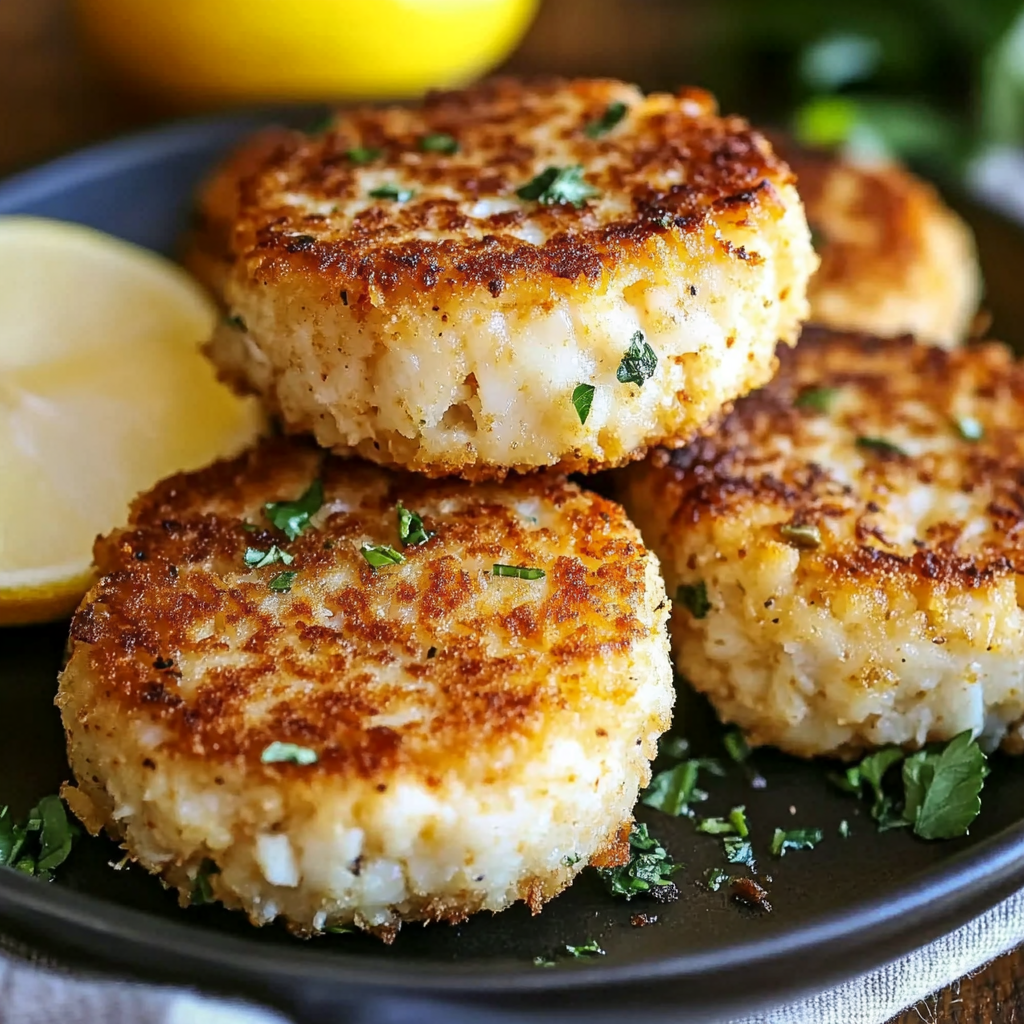
Pro Tips for Perfect Crab Cakes Every Time
To achieve foolproof crab cakes that are golden, moist, and don’t fall apart, follow these expert techniques:
-
Keep the mixture cold – Chilling firms the cakes, making them easier to handle and cook.
-
Don’t overmix – Overworking the mixture can break up the lump crabmeat and result in a mushy texture.
-
Use just enough binder – Too much mayo or breadcrumbs can overwhelm the flavor and make them dense.
-
Cook in batches – Overcrowding the skillet lowers the temperature and can cause uneven browning.
-
Flip gently – Use a thin, wide spatula to carefully turn the cakes. Let them sear before flipping to help them stay intact.
Check out “Seafood Cooking Techniques” for a more detailed guide on flipping, frying, and searing seafood to perfection.
Easy Variations of Old Bay Crab Cakes
Crab cakes are adaptable to different dietary needs and flavor preferences. Here are simple ways to modify the base recipe without sacrificing quality:
For a Spicy Kick:
-
Add ¼ tsp cayenne pepper or a dash of hot sauce to the mix
-
Stir in minced jalapeño for heat and crunch
Gluten-Free Option:
-
Use gluten-free breadcrumbs or crushed rice crackers
-
Ensure the mustard and Worcestershire are labeled gluten-free
Baked Crab Cakes:
-
Bake at 400°F for 12–15 minutes, flipping halfway
-
Spray with oil before baking for a crispy finish
Mini Crab Cakes:
-
Divide the mixture into 12–16 small cakes for party appetizers
-
Serve with toothpicks and a trio of dipping sauces
Vegetable Add-Ins:
-
Finely diced red bell pepper or green onion adds color and flavor
-
Avoid watery vegetables like cucumber or tomato
For more visual ideas, check out Pinterest’s crab cake boards. You can also visit our post on “Creative Party Appetizers with Seafood” for more variation ideas.
Serving Suggestions and Sides
Pairing your Old Bay crab cakes with the right sides can turn a simple meal into a gourmet experience. Here are popular options:
Classic Sides:
-
Coleslaw – Creamy or vinegar-based
-
Corn on the cob – Grilled with butter and herbs
-
Roasted potatoes – With garlic and rosemary
Lighter Options:
-
Green salad with lemon vinaigrette
-
Steamed vegetables (asparagus, broccoli, or green beans)
Sauces:
-
Tartar sauce
-
Remoulade
-
Lemon aioli
-
Spicy mayo
For a creative twist, see our internal guide: “5 Homemade Sauces for Seafood”.
Beverage Pairings:
-
Crisp white wines: Sauvignon Blanc or Pinot Grigio
-
Sparkling water with citrus
-
Light beer or a dry cider
Use this section as a reference for creating themed meals and elegant presentations. For more inspiration, browse Pinterest seafood recipes.
Storing and Reheating Crab Cakes
Proper storage ensures your crab cakes retain their flavor and texture:
-
Refrigeration: Store cooked crab cakes in an airtight container for up to 3 days.
-
Freezing: Freeze raw or cooked crab cakes individually wrapped. Use within 1 month.
-
Reheating: Warm in the oven at 350°F for 10–12 minutes or in an air fryer for a crispy finish.
Never microwave crab cakes, as it can cause them to become soggy or rubbery. For more on proper storage, see “How to Store and Prep Fresh Seafood”.
Nutritional Information and Dietary Considerations
Here’s a general nutritional profile for one medium Old Bay crab cake (based on the recipe provided):
-
Calories: ~200
-
Protein: 14g
-
Fat: 12g
-
Carbohydrates: 8g
-
Allergens: Contains shellfish, egg, and gluten
Dietary modifications:
-
Replace breadcrumbs with almond flour for a low-carb version
-
Use egg substitutes and vegan mayo for a dairy-free variation
Always read labels for allergens, especially with pre-packaged crab meat or sauces.
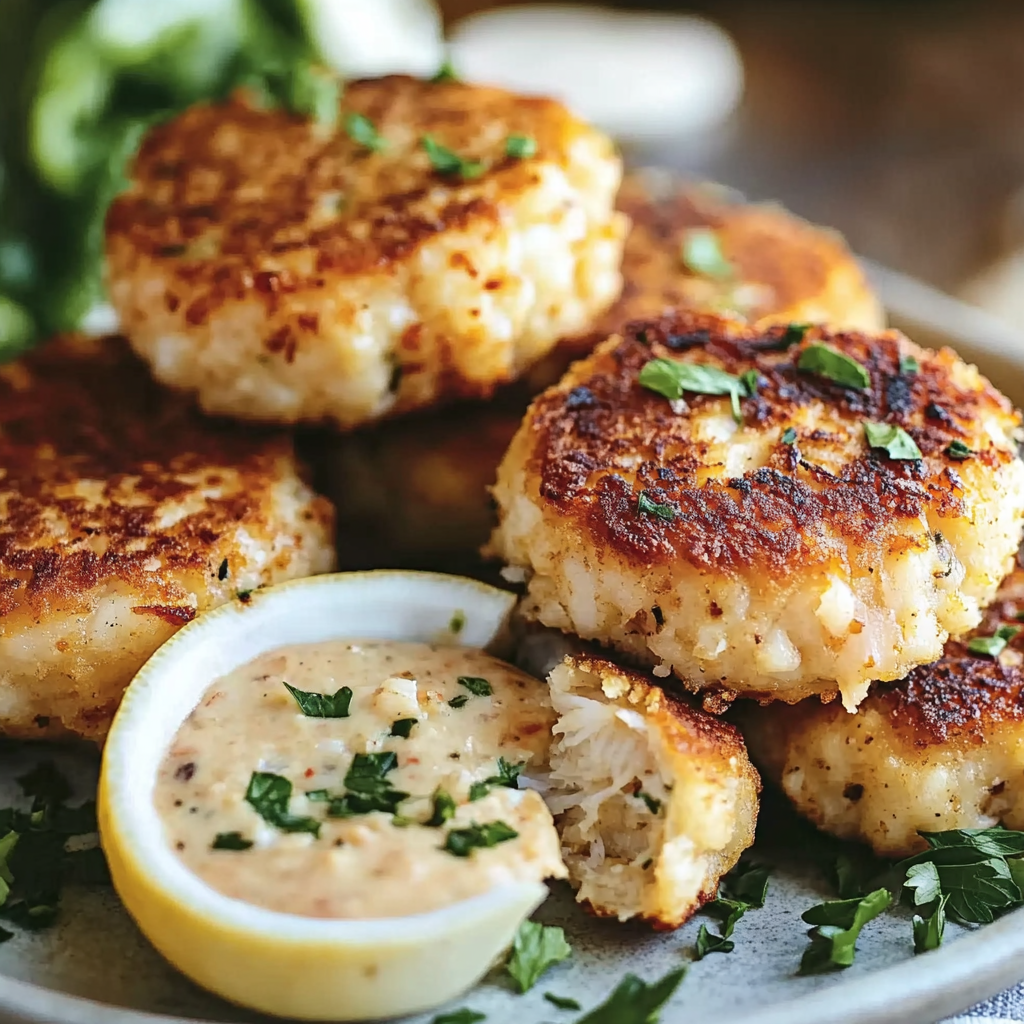
FAQs
Can I use canned crab meat for crab cakes?
Yes, pasteurized canned lump crab is a convenient and cost-effective option. Make sure to drain and pick through it to remove any shells.
How do I keep crab cakes from falling apart?
Chill the mixture before cooking and avoid overmixing. Proper binding with egg and mayo is also key. See “Tips to Prevent Crab Cakes from Crumbling”.
Can crab cakes be made ahead of time?
Absolutely. Form the cakes, cover, and refrigerate for up to 24 hours before cooking. You can also freeze them uncooked.
What can I substitute for Old Bay seasoning?
A mix of celery salt, paprika, black pepper, cayenne, and mustard powder offers a similar flavor. You can also explore spice blends in our “Seafood Spice Substitutes” post.
Should I use fresh or dried parsley in crab cakes?
Fresh parsley is preferred for flavor and color, but dried works in a pinch. Use 1/3 of the amount if substituting dried.
PrintEasy and Delicious Crab Cake Recipes with Old Bay Seasoning
Easy and Delicious Crab Cakes with Old Bay Seasoning
These classic Maryland-style crab cakes are made with sweet lump crabmeat, aromatic celery and parsley, and the bold flavors of Old Bay seasoning. Moist on the inside and golden on the outside, they’re perfect for an elegant dinner or a simple weeknight meal. Serve them hot with lemon wedges and your favorite dipping sauce.
- Author: Clara
Ingredients
- 1/2 cup mayonnaise
- 1 tbsp Dijon mustard
- 1 tbsp Worcestershire sauce
- 1 tbsp lemon juice
- 1/2 tsp Old Bay seasoning
- 1/4 tsp salt
- 1/4 tsp ground black pepper
- 1 large egg, beaten
- 1/2 cup finely chopped celery
- 2 tbsp chopped fresh parsley
- 1 lb lump crabmeat, picked over for shells
- 1/2 cup plain breadcrumbs
- 2 tbsp butter (for frying)
- Lemon wedges, for serving (optional)
Instructions
In a large bowl, whisk together the mayonnaise, Dijon mustard, Worcestershire sauce, lemon juice, Old Bay seasoning, salt, pepper, and the beaten egg until well combined.
Stir in the chopped celery and parsley.
Gently fold in the crabmeat and breadcrumbs until just combined, being careful not to break up the crab too much.
Form the mixture into 6-8 crab cakes, about 1/2 inch thick. Place them on a baking sheet and refrigerate for at least 30 minutes to help them set.
In a large skillet, melt the butter over medium heat. Cook the crab cakes in batches for about 3-4 minutes on each side, or until golden brown and heated through.
Serve warm with lemon wedges if desired.
Notes
-
Always chill crab cakes before frying for better shape and texture.
-
Don’t overwork the crab mixture to preserve the meat’s natural chunkiness.
-
Use fresh lemon juice and parsley for the best flavor lift.
-
Serve with a simple green salad or coleslaw for a balanced seafood meal.
-
Double the recipe for parties and make mini versions for easy appetizers.
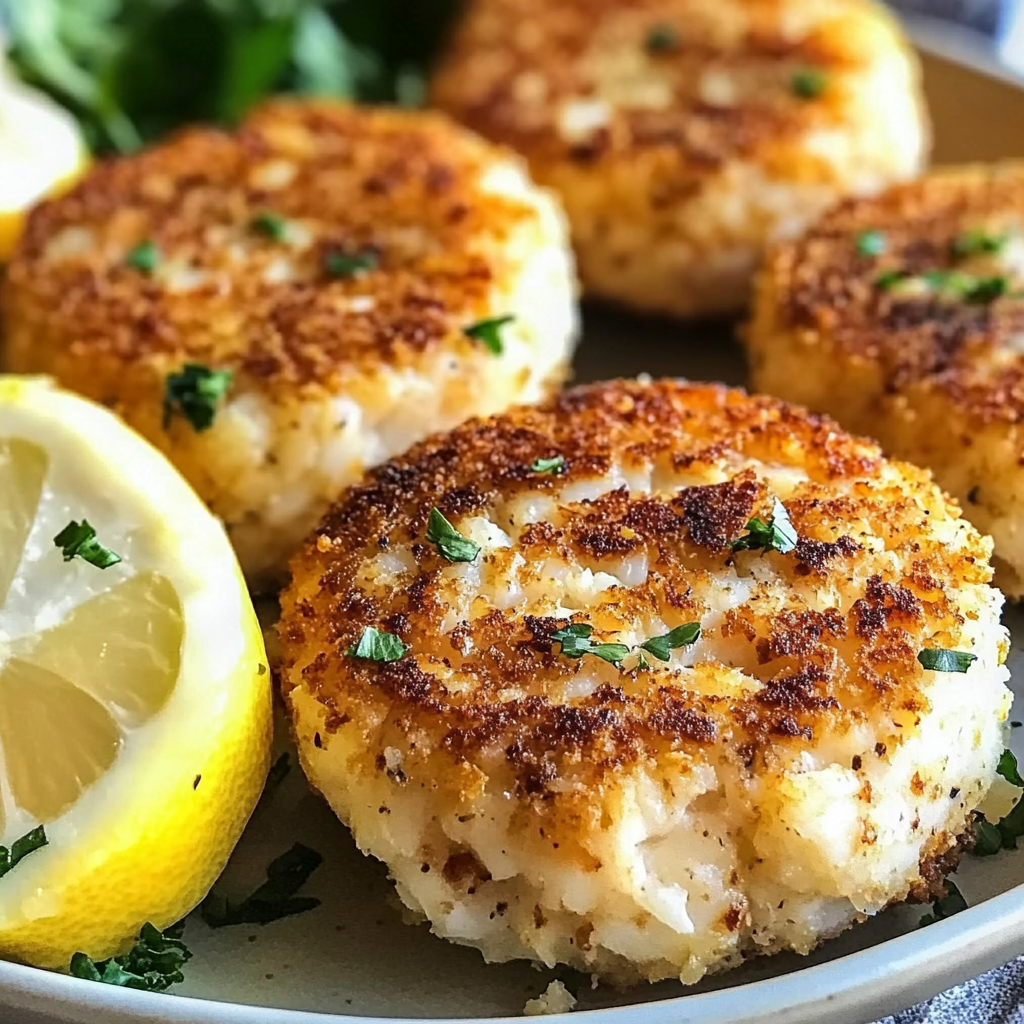


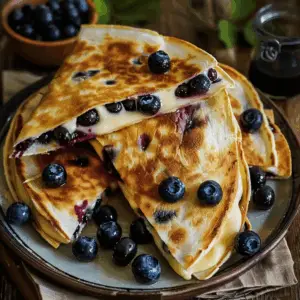

Very nice post. I just stumbled upon your weblog and wished to say that I’ve truly enjoyed surfing around your blog posts. After all I will be subscribing to your feed and I hope you write again very soon!